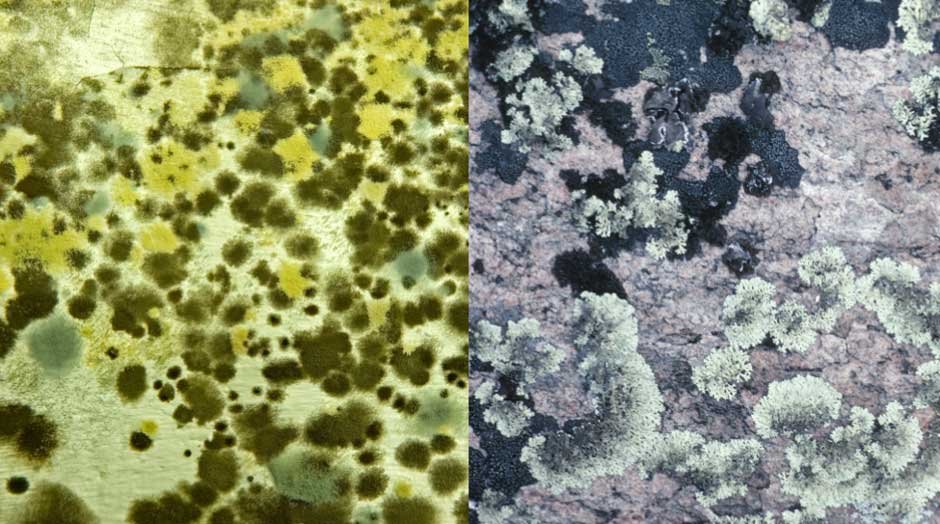Mold and mildew efflorescence appears on the wall as a consequence of excessive moisture. This is not only an aesthetic problem but also carries serious health consequences. Fortunately, you can fight it. How to distinguish mold from fungus, and what can you do to get rid of harmful efflorescence?
Mold and mildew is a serious problem that does not form on the wall overnight. Sometimes, however, it is easy to overlook its first symptoms. When it starts to appear under the wallpaper, behind the furniture, or behind the floorboards, you will most often only notice it when harmful stains have already appeared on the wall. However, this does not mean that it is too late to react.
Where does this problem come from? The appearance of unsightly efflorescence on the wall is closely related to moisture, and there are many reasons for its formation. The cause can be faulty ventilation, lack of air circulation, windows that are too tight, permanent flooding of the wall, or poor insulation of the building. If it seems to you that the kitchen and bathroom are the most vulnerable to the occurrence of moisture, then you are right. However, this doesn’t mean that the problem won’t appear in other rooms. In fact, moisture can settle on any wall – including in the hallway or bedroom.
To react even before the problem develops – the formation of mold and mildew efflorescence – it’s a good idea for you to take a good look at your apartment once in a while. What should concern you? Constantly fogged-up windows and mirrors, swelling wallpaper, or wet spots on the wall – are the first symptoms of the appearance of moisture in the house.
When unsightly efflorescence appears to your eyes during one of such inspections, a quick response is necessary. How to remove fungus from the wall? Choose the right steps and preparations after determining whether it is mold or fungus, and after checking how big and serious the problem is. Quick reaction is very important because fungi grow dynamically.
Fungus or mold – what are the differences?

Both fungus and mold-like moist places and lack of ventilation. Their spores float in the air, and when they hit susceptible soil, they nest in it and develop quickly. They manifest themselves as specific efflorescence, black, brown, or beige in color.
Although mold and fungi are most often “lumped together,” they are two distinct problems. They lead to different consequences and often need to be dealt with differently. So what is the difference between fungus and mold?
Mildew appears on the ceiling and walls. It takes the form of specific colored spots (efflorescence). Considering both problems, mold is the lesser one. Where does this conclusion come from? Mildew appears only on the outside of the walls and is easily removed. It is harmful to health. It affects the respiratory system and contributes to the development of numerous diseases. It also has an allergenic effect. The medium for mold is dust and grease, among other things.
The fungus penetrates deep into the surface on which it has settled – it doesn’t matter if it is masonry or wood – and destroys its structure. If you don’t react in time, it can really do a lot of damage. Like mold, it can take on different colors. It forms characteristic cobwebs and emits an unpleasant odor. Often it is only after it that you will realize that there is a fungus problem in the house (because, for example, it develops in an invisible place). Its removal is time-consuming and dangerous to health. It also produces harmful toxins and manifests carcinogenic and immune-compromising effects.
As you can see, constant contact with fungus and mold will negatively affect your health. Both microorganisms are particularly dangerous for young children and the elderly. What can continuous exposure to inhalation of harmful agents, secreted by fungi and mold, lead to? In addition to upper respiratory diseases, they can also cause concentration problems, runny nose, cough, asthma, and allergies.
You may be interested in taking a look at this – https://verywellhome.com/10-warning-signs-of-mold-toxicity/
How to get rid of fungus from the wall?
To avoid the development of serious diseases, due to constant residence in a moldy and moldy environment, it is best to take up the fight right away, after noticing and locating the problem. With what to remove the fungus from the wall? One way to fight the problem is to use the services of professionals.
This is one of the easiest ways to get rid of fungus from the wall. Professionals will thoroughly deal with the problem, identify the type of efflorescence, and use specialized means. Often they will also be able to diagnose the cause of its formation based on appropriate measurements. After all, recognizing the source of the trouble is one of the elements of an effective fight against fungi. It is worth adding that you will get a guarantee for the services of specialized fumigation companies.
Using the services of professionals is not a necessity. You can also undertake an effective fight against fungus yourself. We will tell you how to remove the fungus from the wall without using the services of professionals. What can you do? Basically, there are two options on how to remove fungus from the wall – home remedies and chemicals. The choice is up to you.
The difficulty of the task is closely related to the degree of fungus on the surface. Remember, too, that chemical remedies will be fully effective only after you have eliminated the source of the problem. So if you just paint over the infected surface, inaccurately scrape off the plaster, or do not get rid of the moisture, the fungus, like a boomerang, will return to the wall.
How to remove mold from the wall?

One of the most popular solutions is to reach for specialized preparations. Fungicides and mold killers are widely available. You can apply them in different ways – surface or the so-called “penetration method”. For this reason, when starting the fight against harmful efflorescence, first well determine the type of problem. This will help you choose the right method of action and effectively get rid of the poisonous tarnish.
How to remove mold from the wall, acting on its surface? There are two ways. The first is the thermal method, which involves tanning the efflorescence with a soldering lamp, applying a fungicide, mechanically cleaning the surface of the fungus, protecting it from reinfection, and finishing the wall.
The second way involves the use of fungicides. When starting work, you must clean the fungus (with a spatula or hard-bristle brush) until you have a healthy surface. If the fungus has penetrated deeply into the wall, it will be necessary to scrape off the plaster with an allowance (about a meter on each side). Next, clean and vacuum the surface to apply the chemical to it. Lubricate or spray the wall three times, at intervals of 12 or 24 hours. After the specified time, proceed with plastering the wall and coat it with a fungicide to prevent fungus renewal.
When using biocides, follow the accompanying instructions, which specify exactly when and in what order to proceed. And don’t forget about personal protection – prepare appropriate clothing, and wear a special mask and goggles. Chemicals can be very toxic, so before using them, check the room for food, pets, or children’s toys (on which fungicidal substances, could settle and harm the youngest household members).
What to do if the fungus has occupied the deeper layers of the wall? In such a situation, use the so-called cavity method. It involves drilling holes in the wall with a diameter of 10-12 mm, every 10-13 cm, and directed downward at an angle of 30-45° to the plane of the wall. Place funnels in such inlets and fill them with biocide, which should be absorbed by the wall as much as possible. Then proceed to glue the holes and finish.
Using strong chemicals is not the only way to remove fungus from the wall. Home remedies, too, should bring the desired results. What to remove fungus from the wall when if you are a proponent of natural and ecological solutions? After mechanically cleaning the surface, impregnate it with a solution of water and vinegar (in a 4:1 ratio), water with grapefruit seed extract (½ liter of water and 10 drops of the extract), or water with soap and tea oil.















Comments